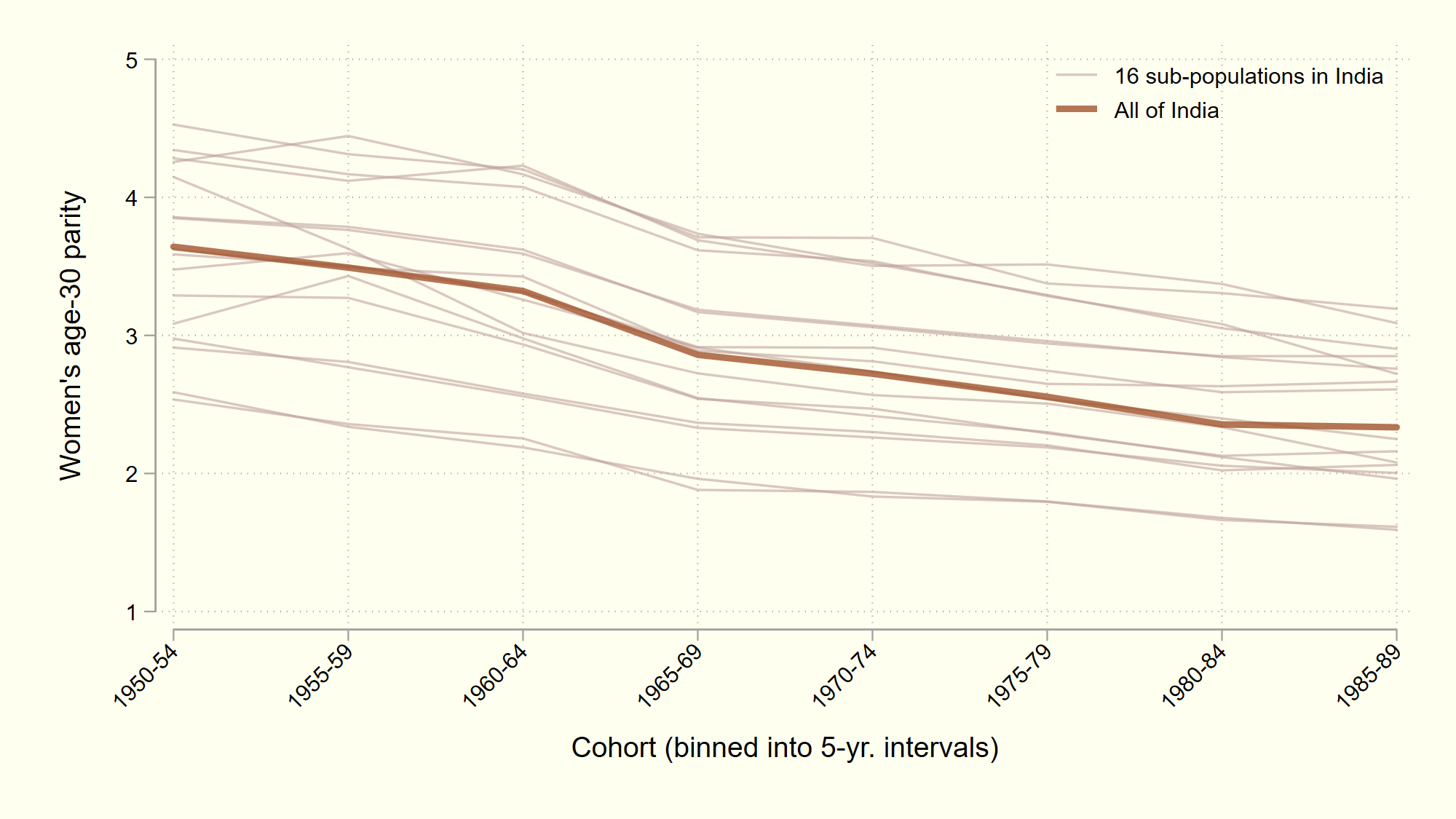Above: We divide mothers in India into 16 large sub-populations according to sector, religion, education, and geography (North versus South India). Even the groups with the highest levels of fertility have declining levels of fertility.
Demography, Vol. 59, No. 6, December 2022
Link to working paper
Abstract
All leading long-term global population projections agree on continuing fertility decline, resulting in a rate of population size growth that will continue to decline toward zero and would eventually turn negative. However, scholarly and popular arguments have suggested that because fertility transmits intergenerationally (i.e., higher fertility parents tend to have higher fertility children) and is heterogeneous within a population, long-term population growth must eventually be positive, as high-fertility groups come to dominate the population. In this research note, we show that intergenerational transmission of fertility is not sufficient for positive long-term population growth, for empirical and theoretical reasons. First, because transmission is imperfect, the combination of transmission rates and fertility rates may be quantitatively insufficient for long-term population growth: higher fertility parents may nevertheless produce too few children who retain higher fertility preferences. Second, today even higher fertility subpopulations show declining fertility rates, which may eventually fall below replacement (and in some populations already are). Therefore, although different models of fertility transmission across generations reach different conclusions, depopulation is likely under any model if, in the future, even higher fertility subpopulations prefer and achieve below-replacement fertility. These results highlight the plausibility of long-term global depopulation and the importance of understanding the possible consequences of depopulation.

